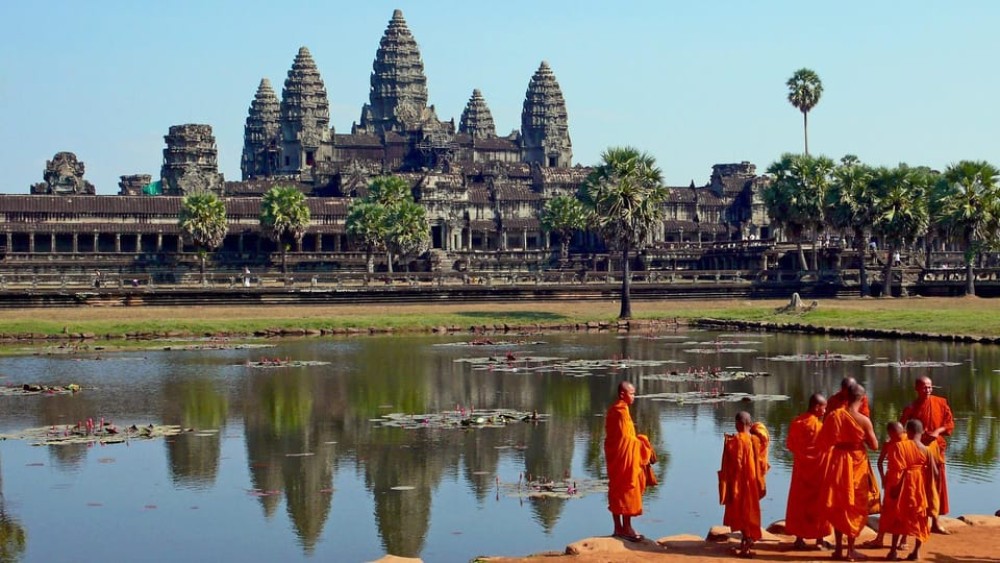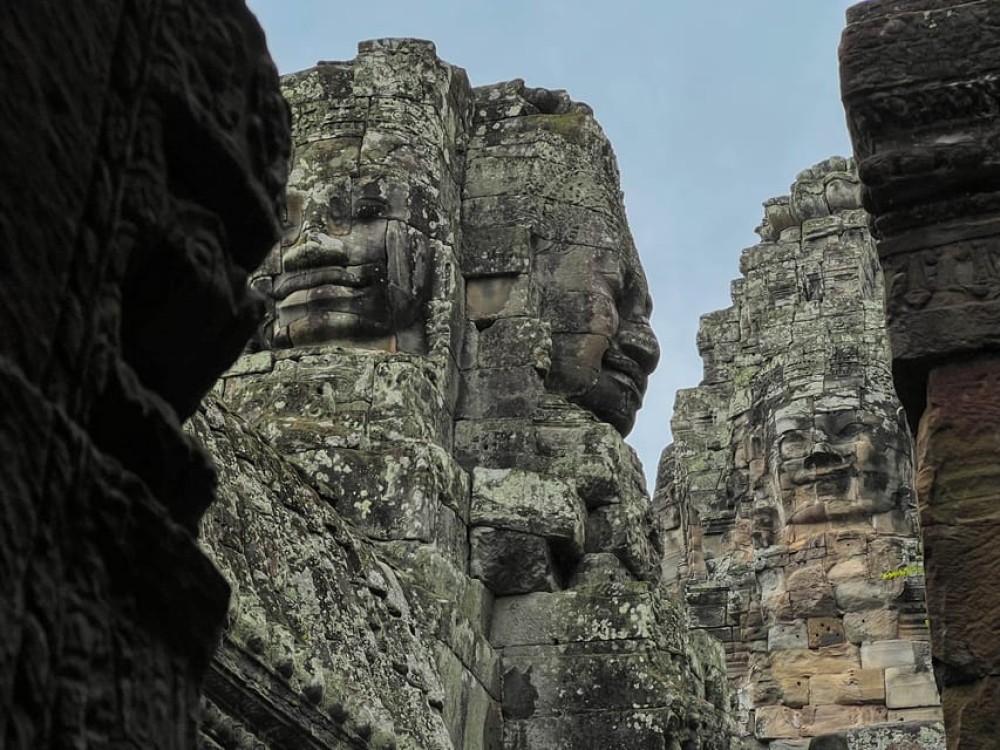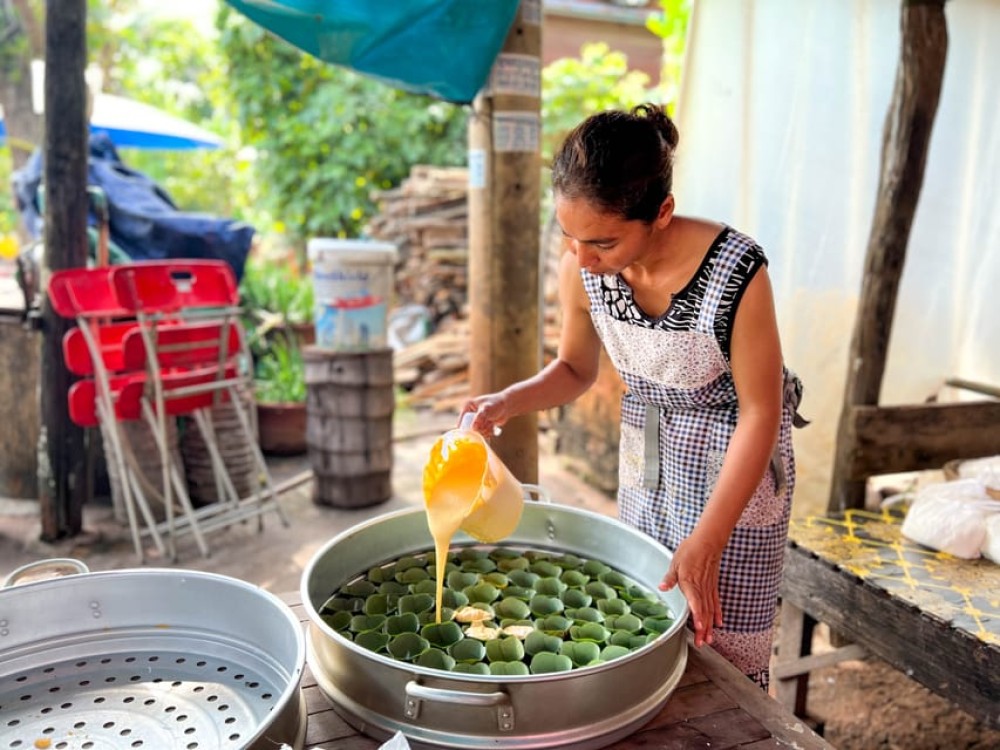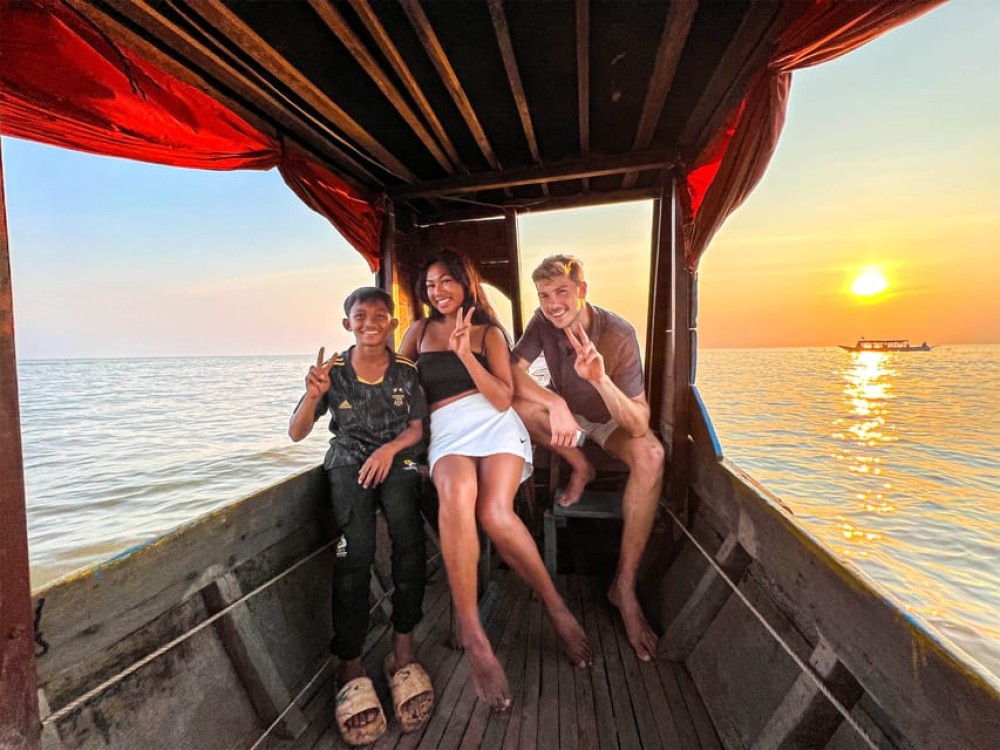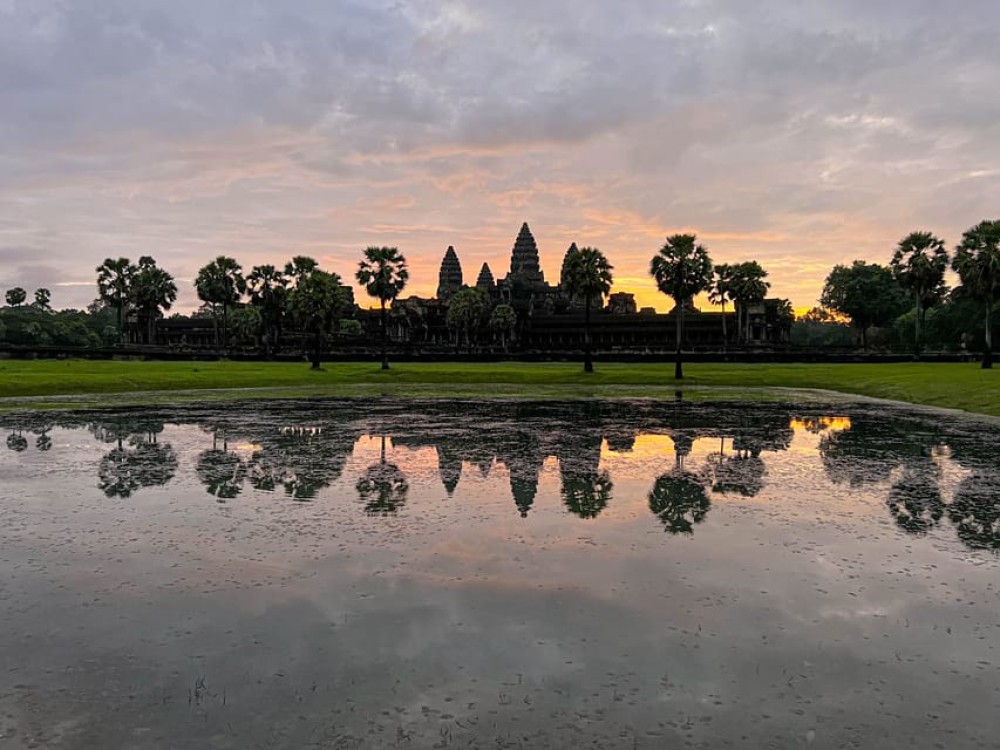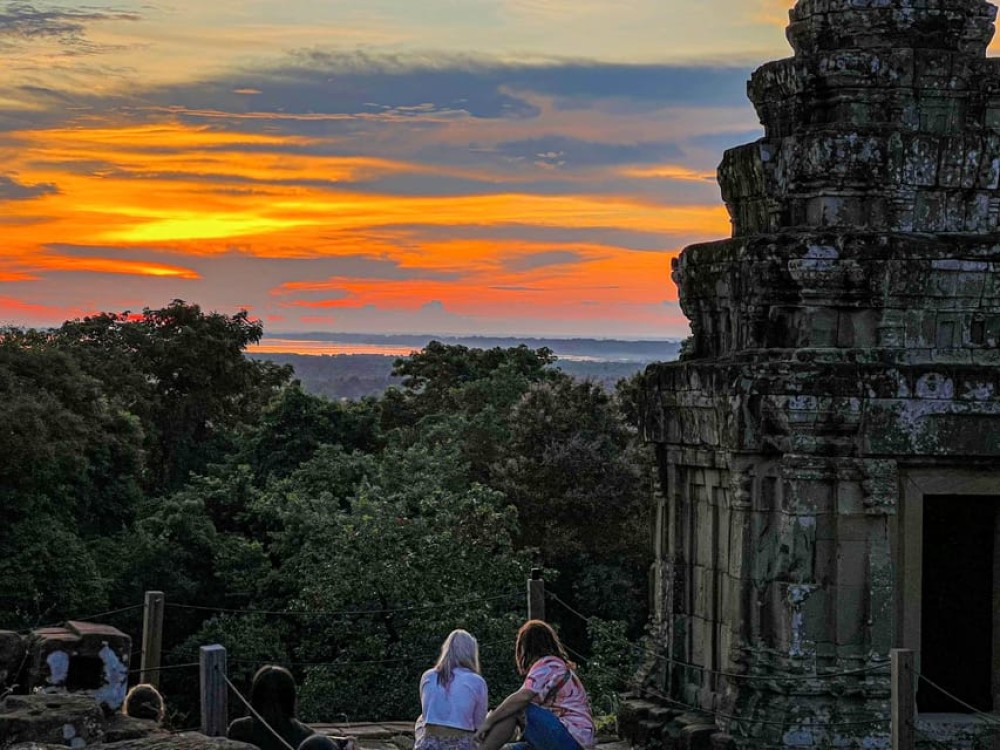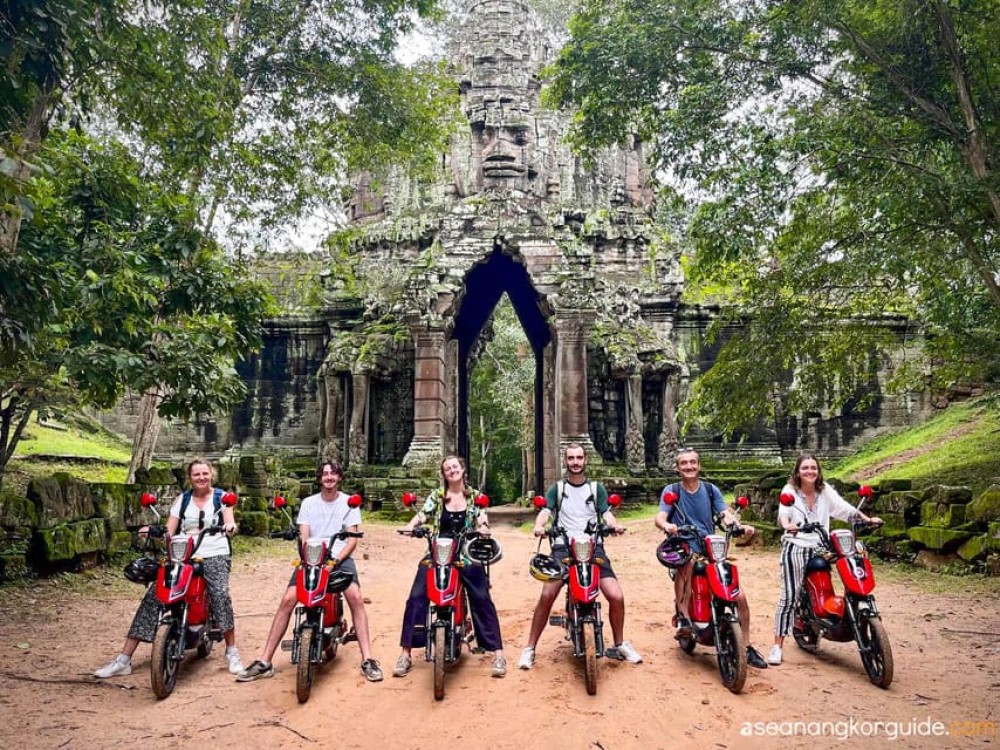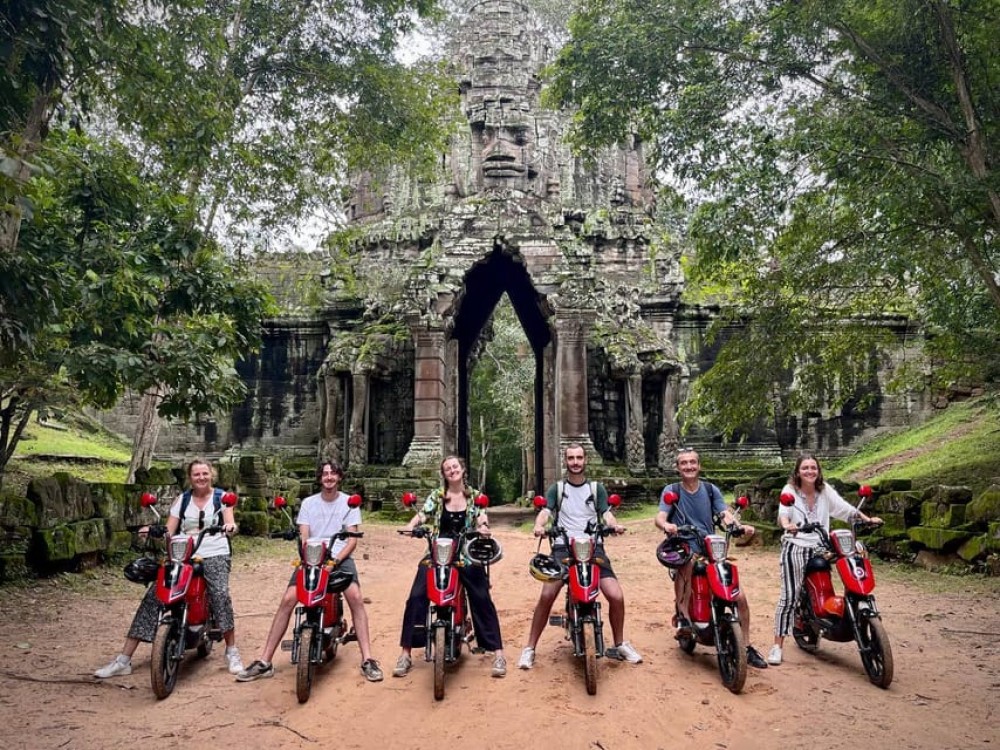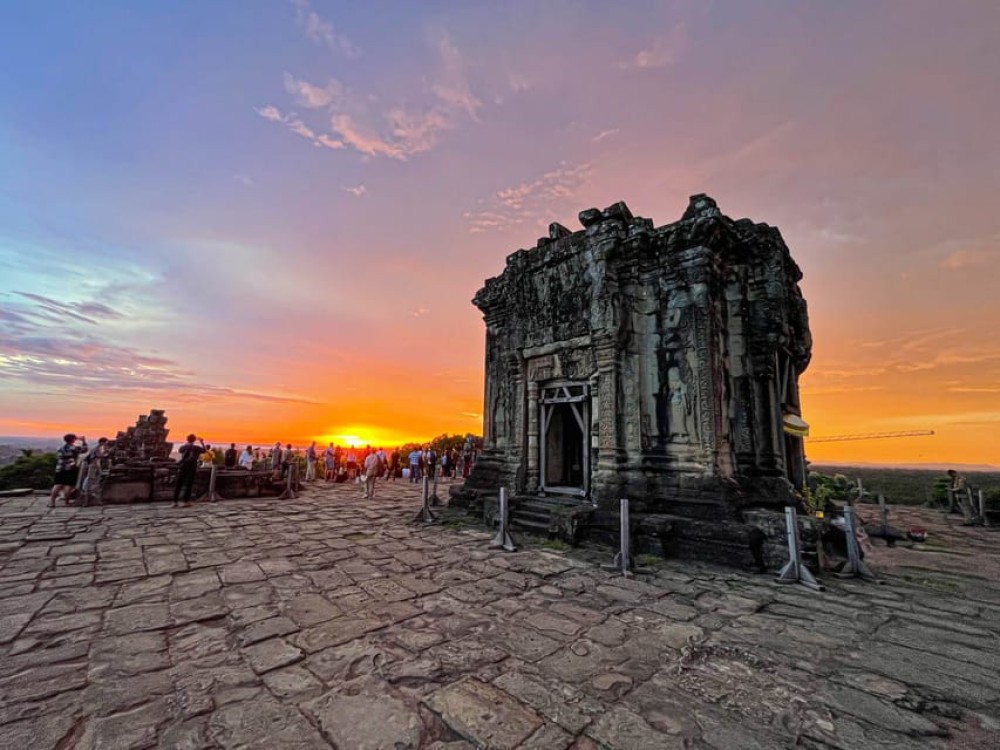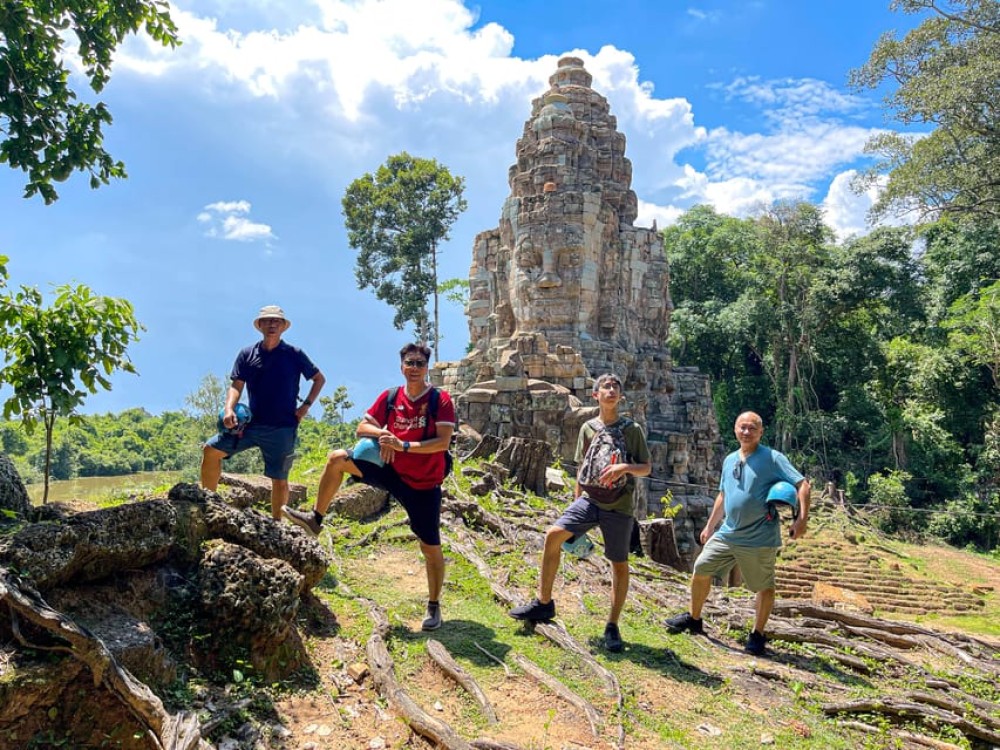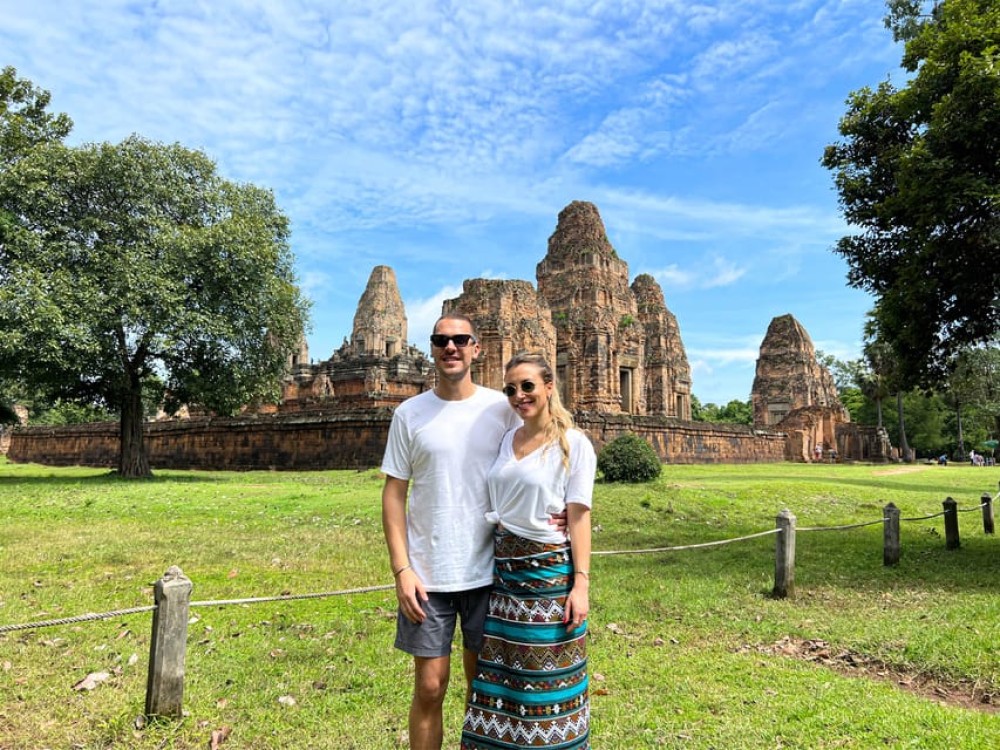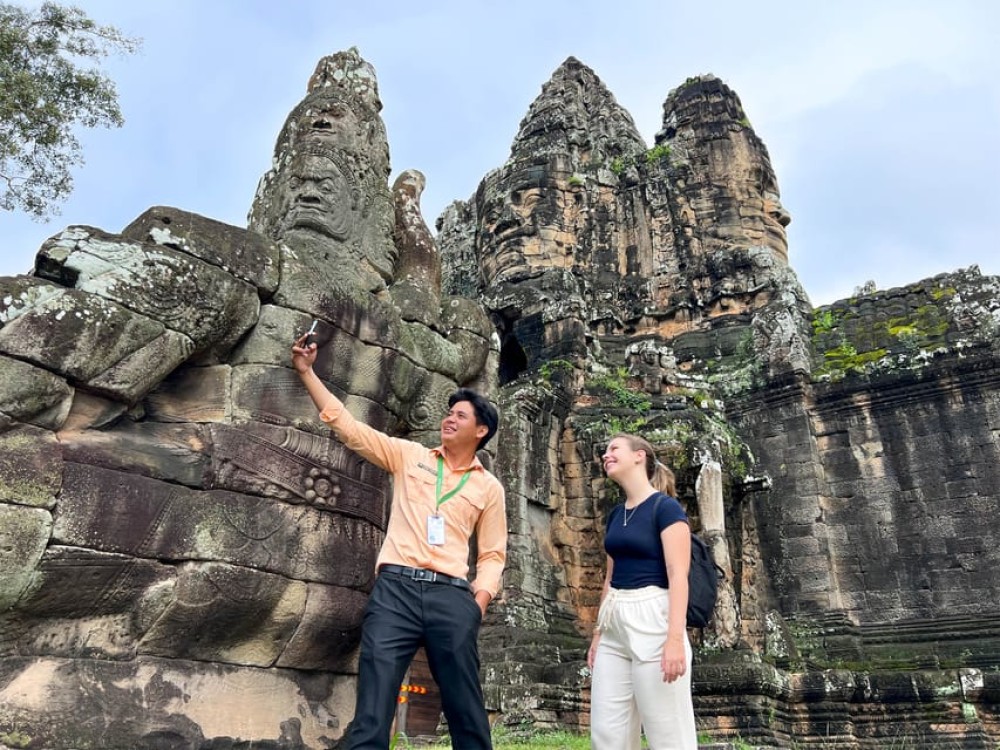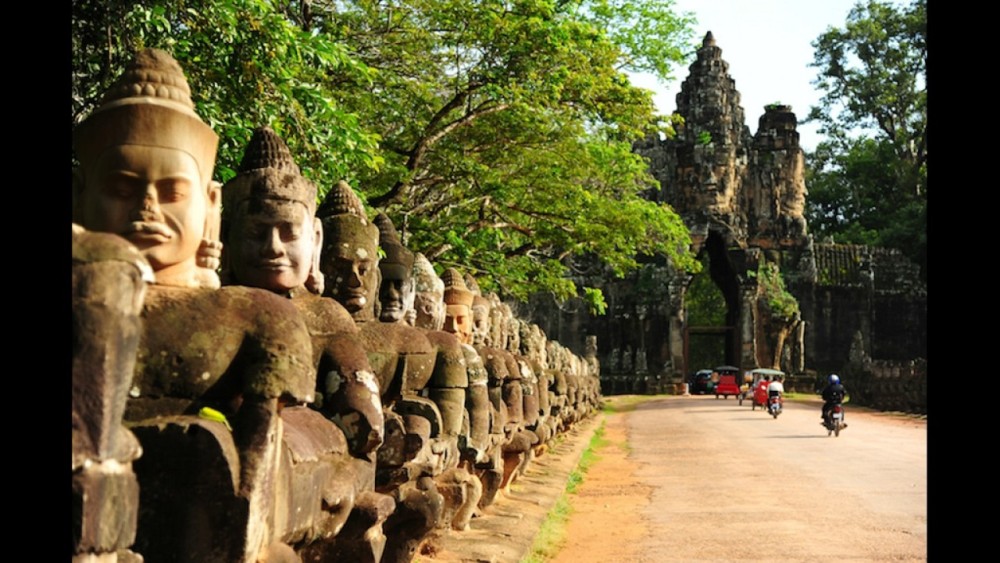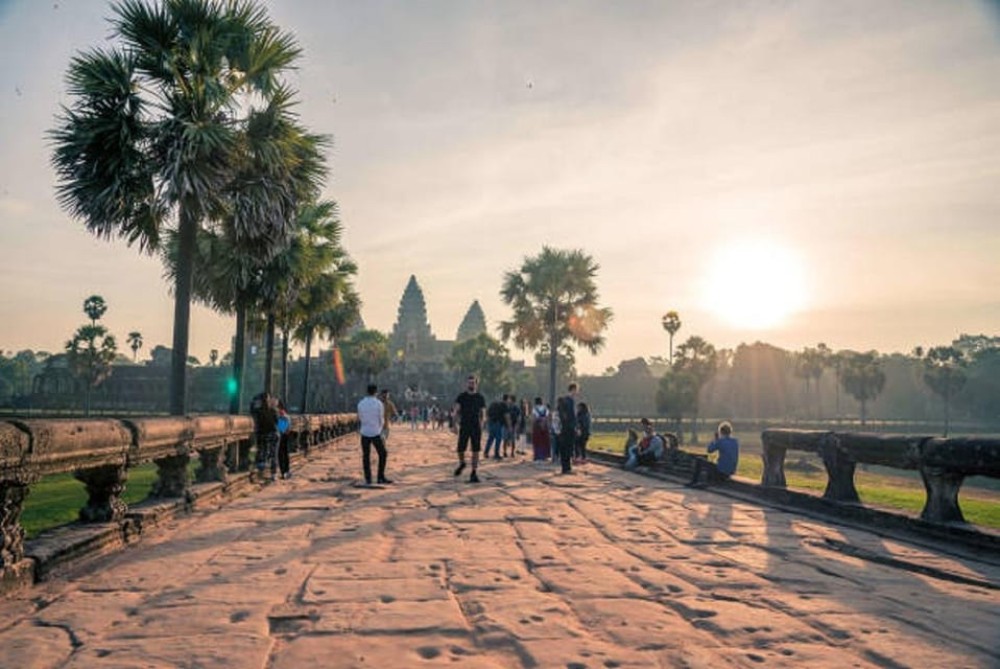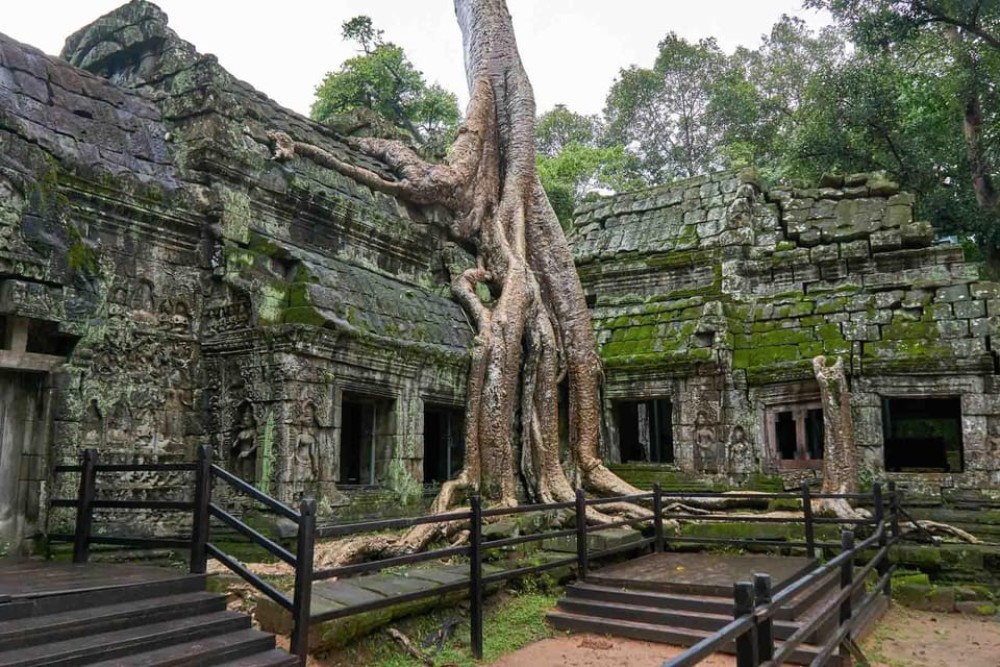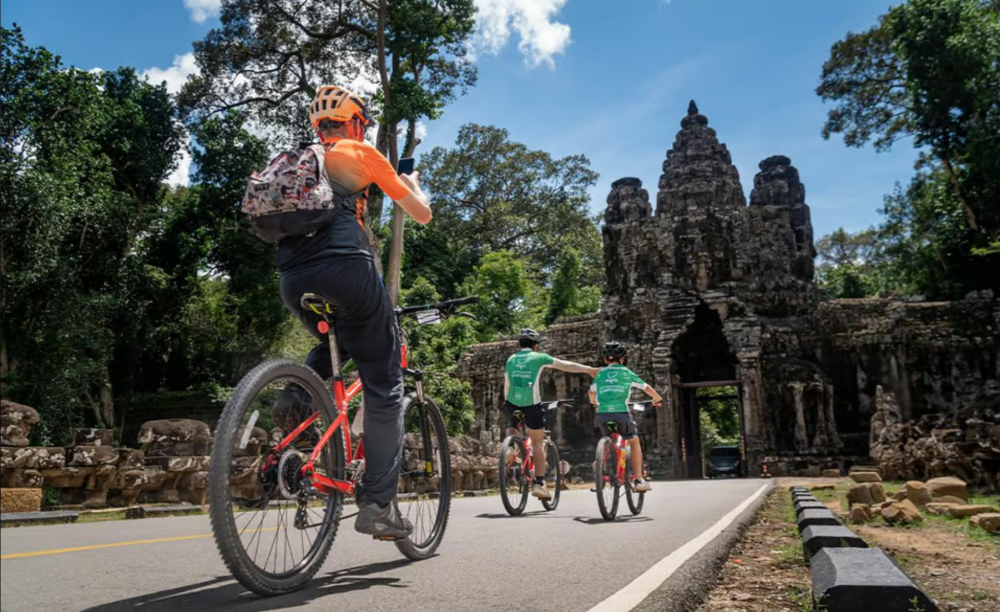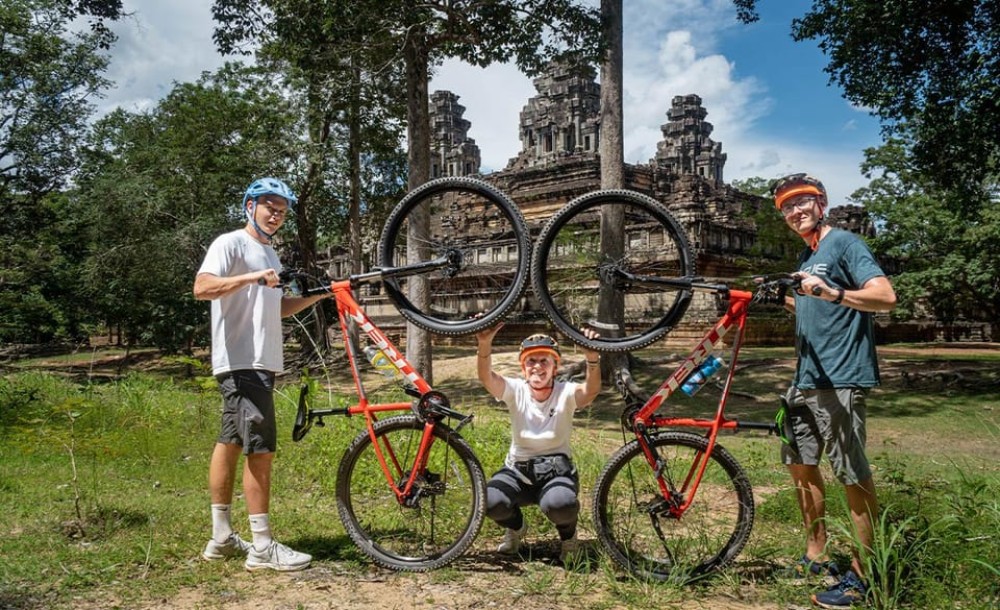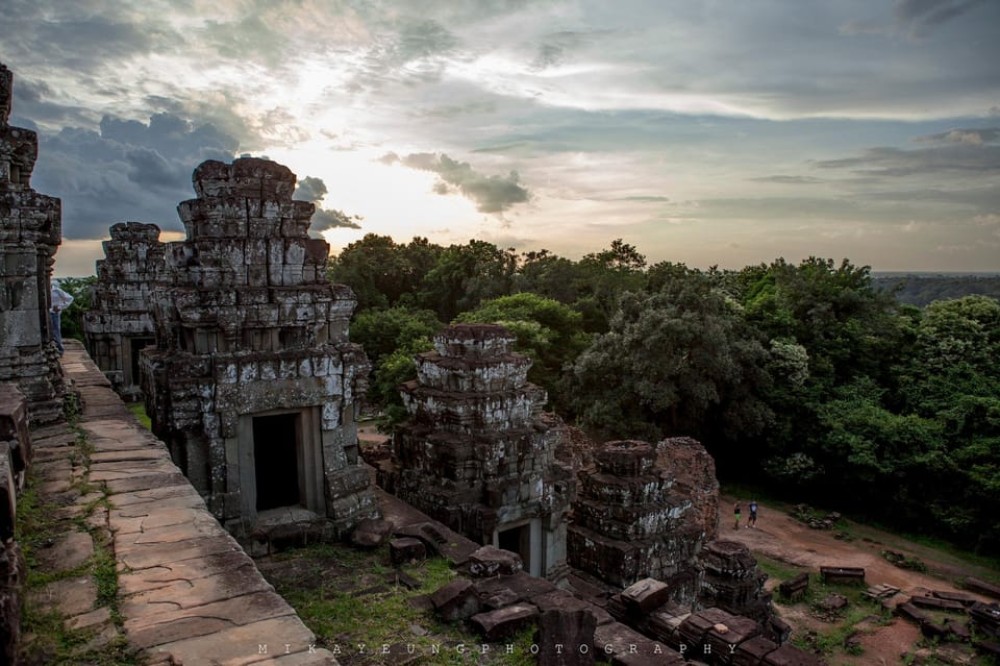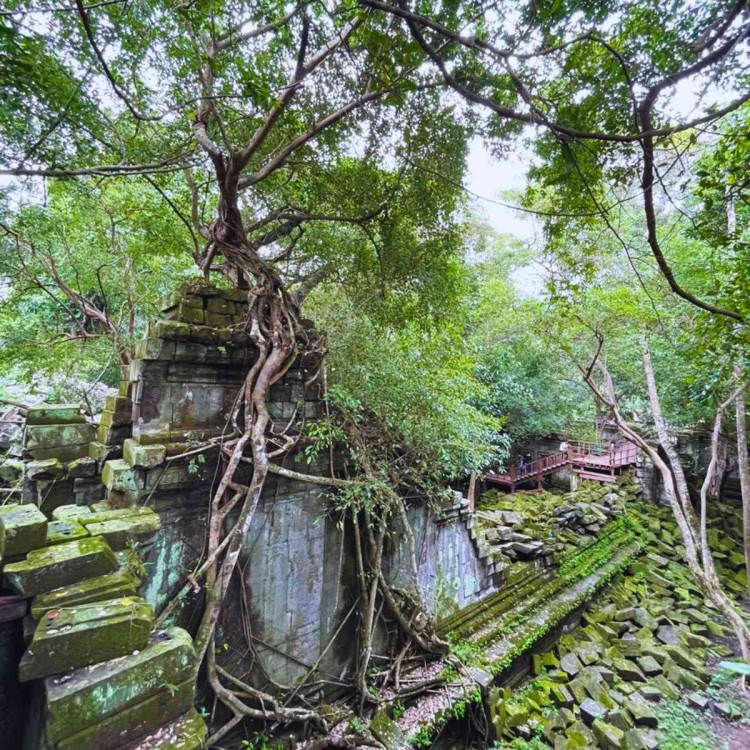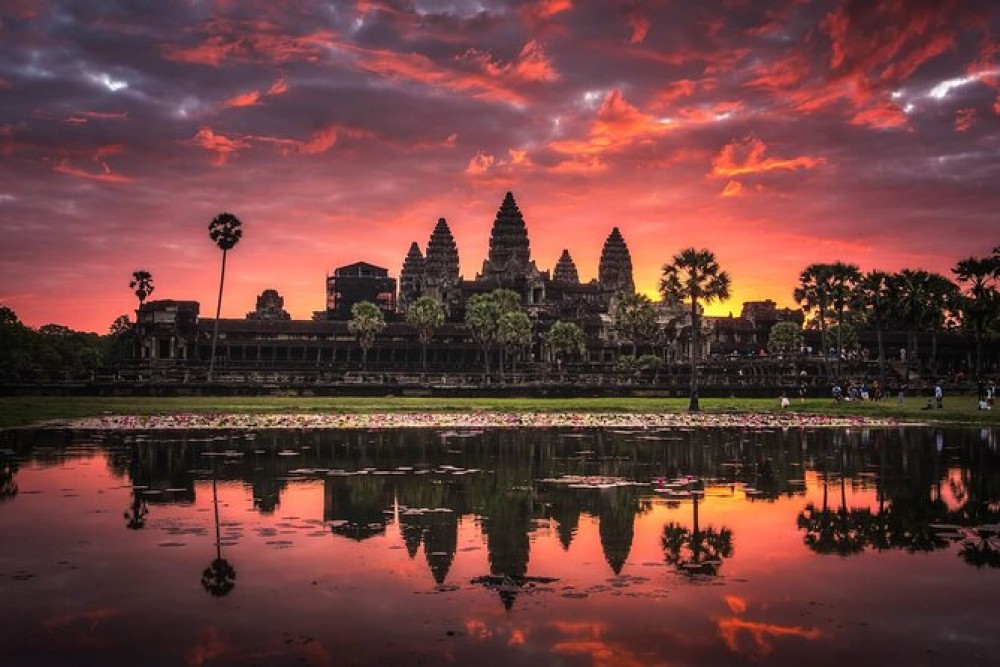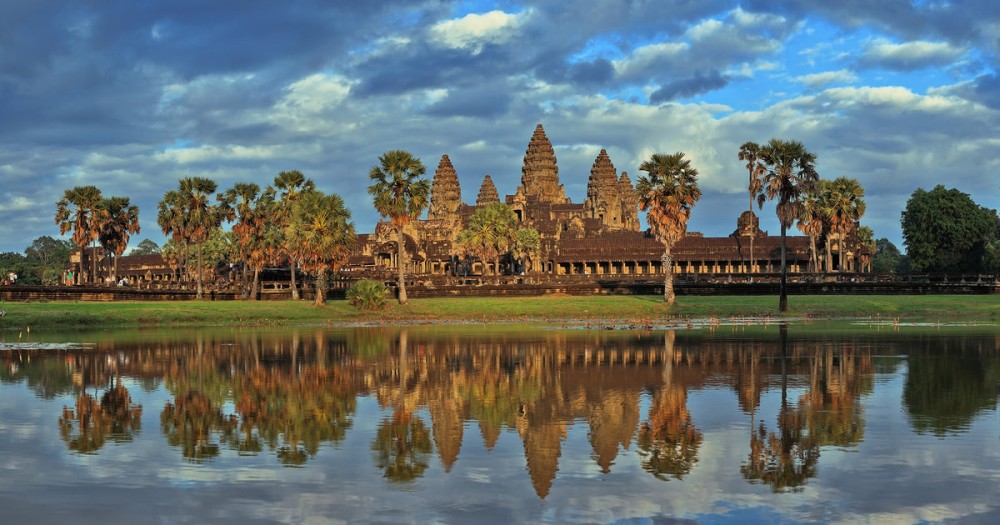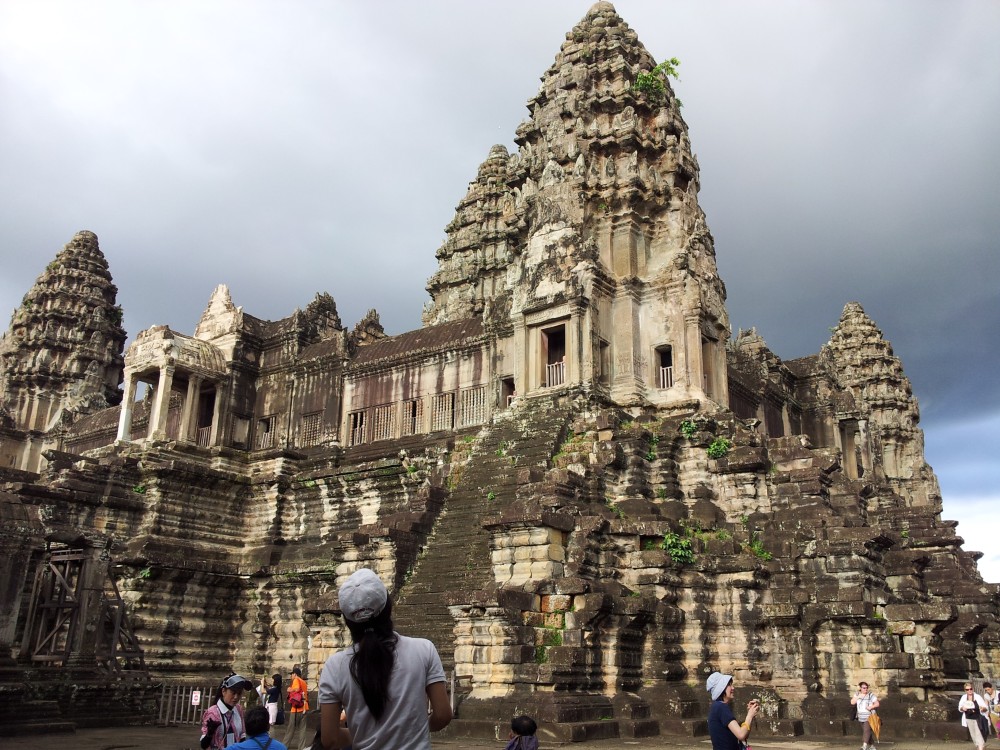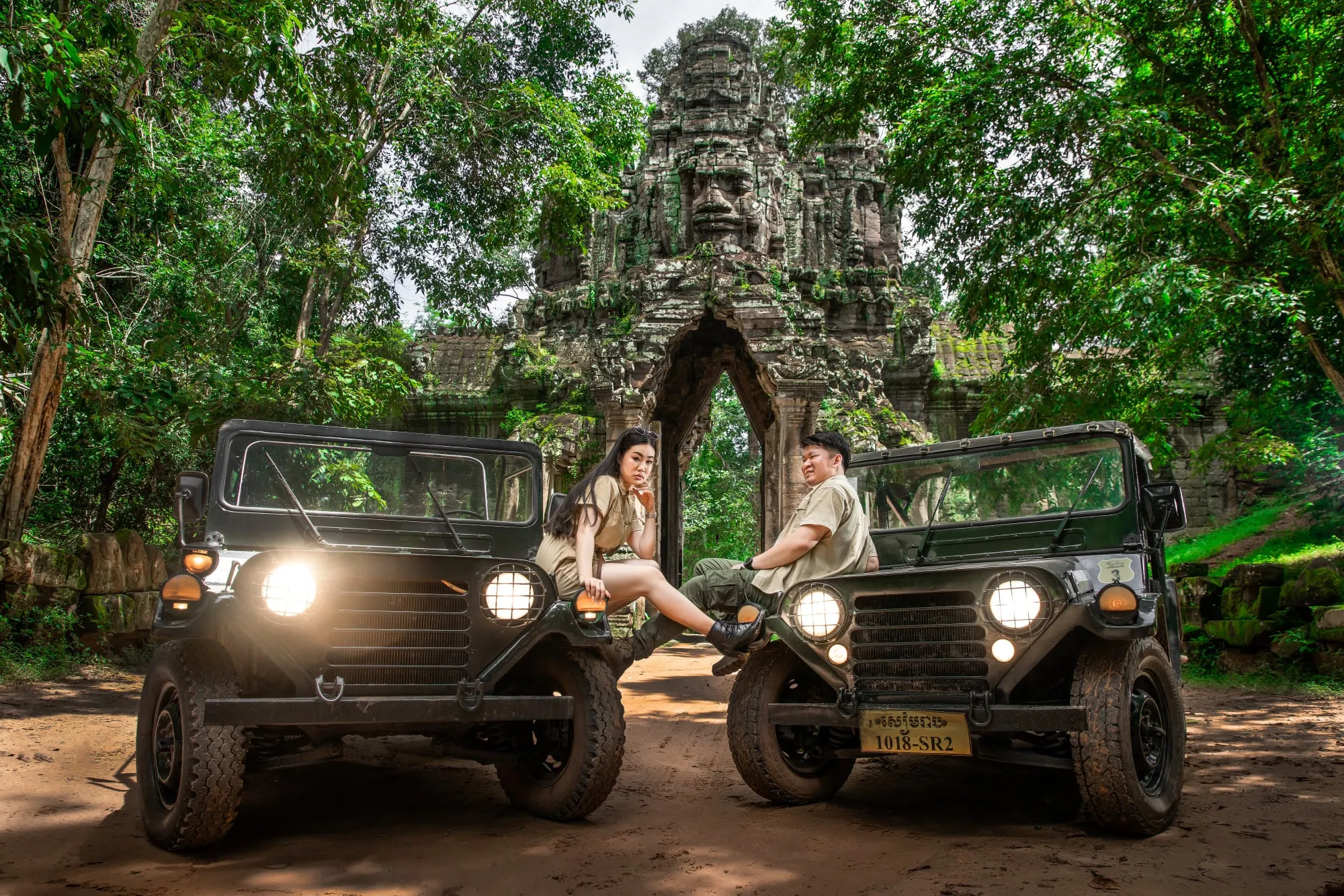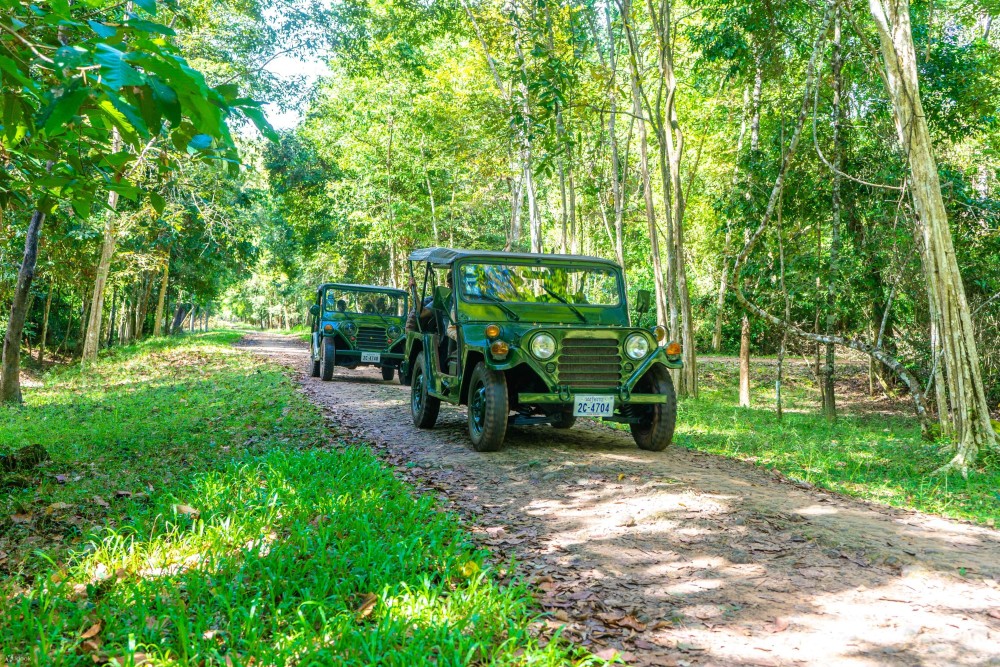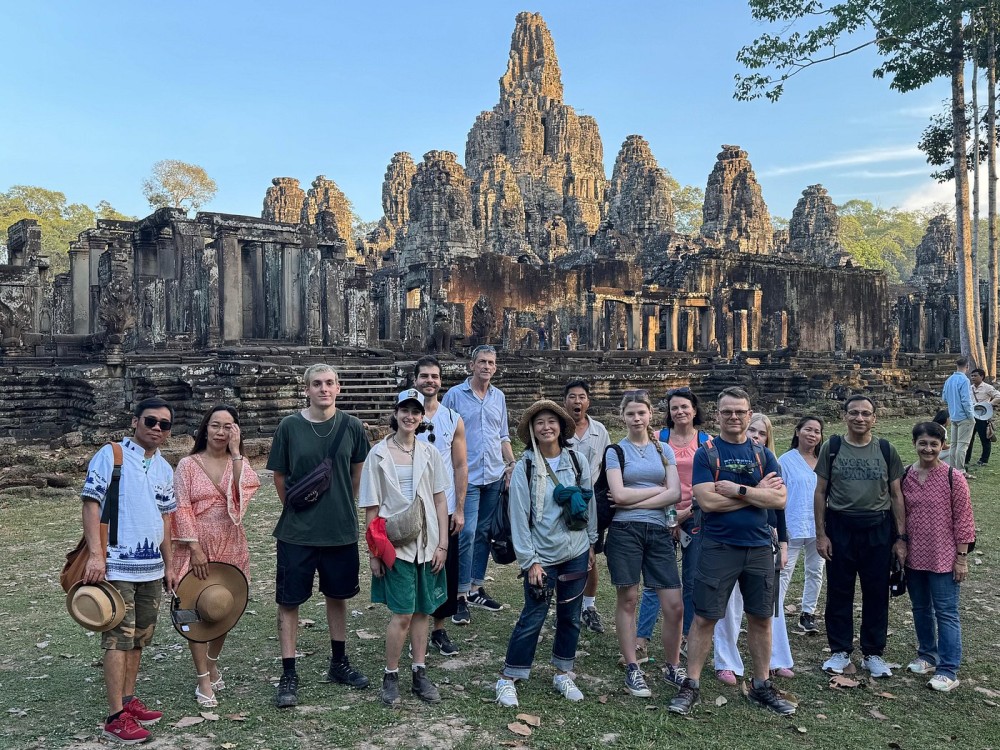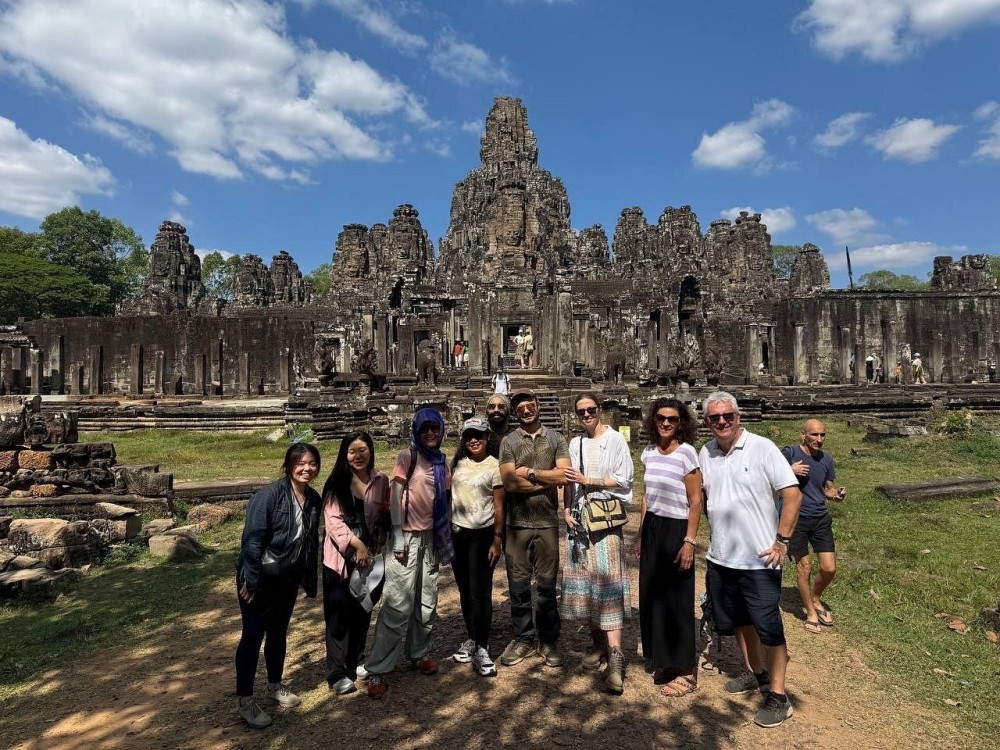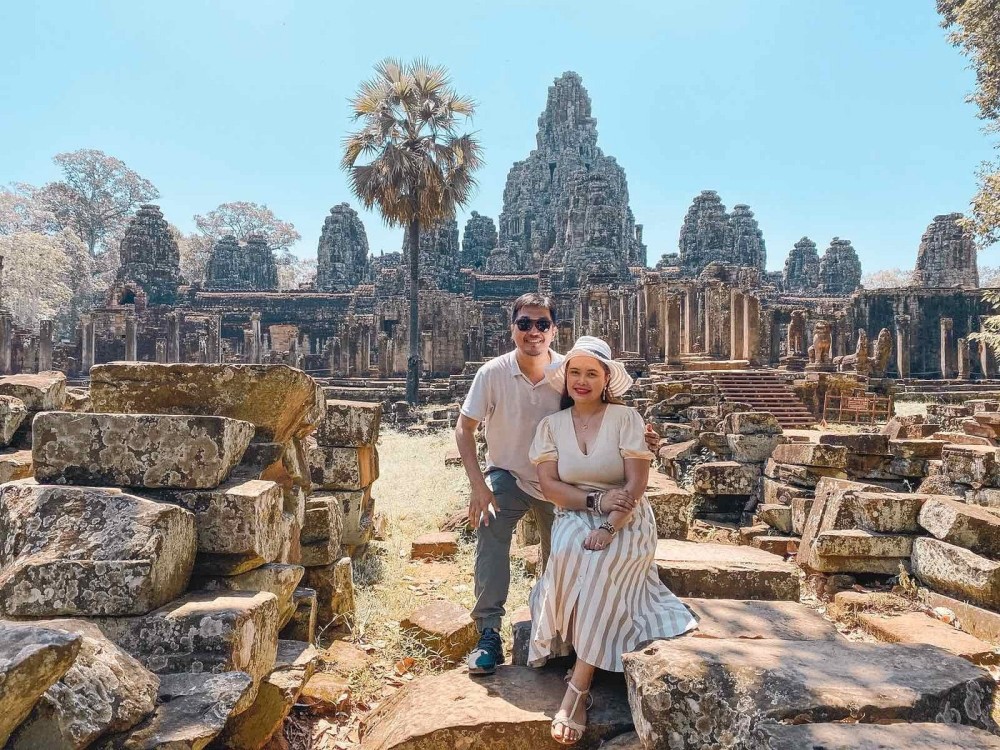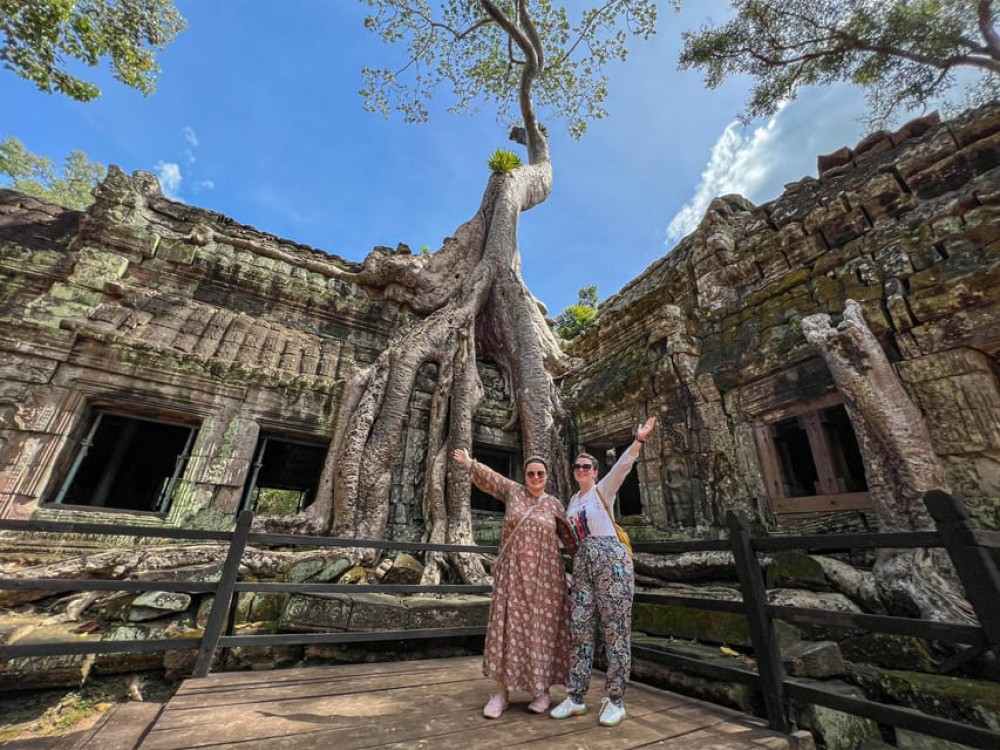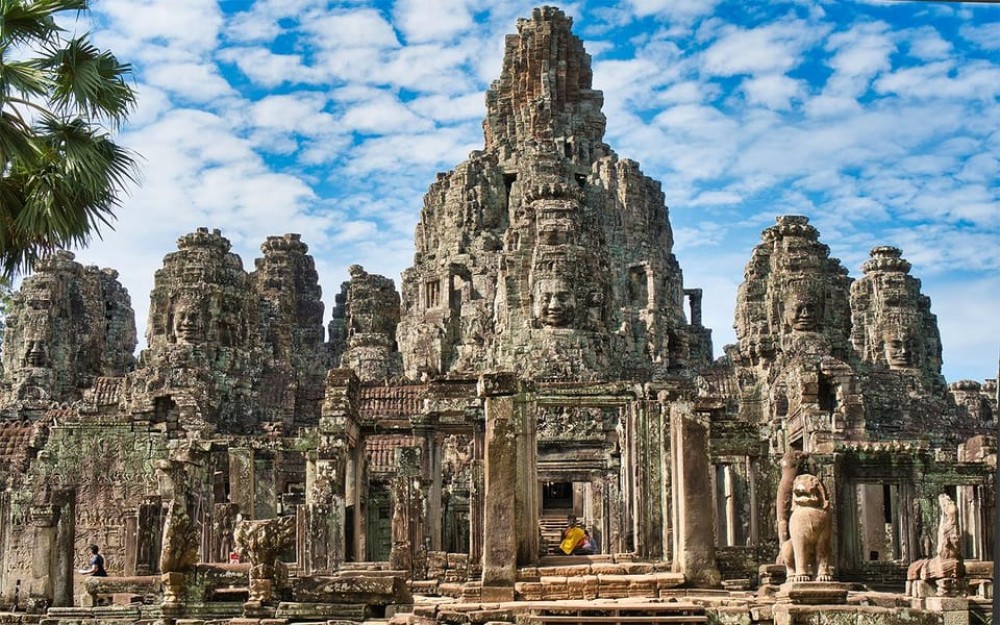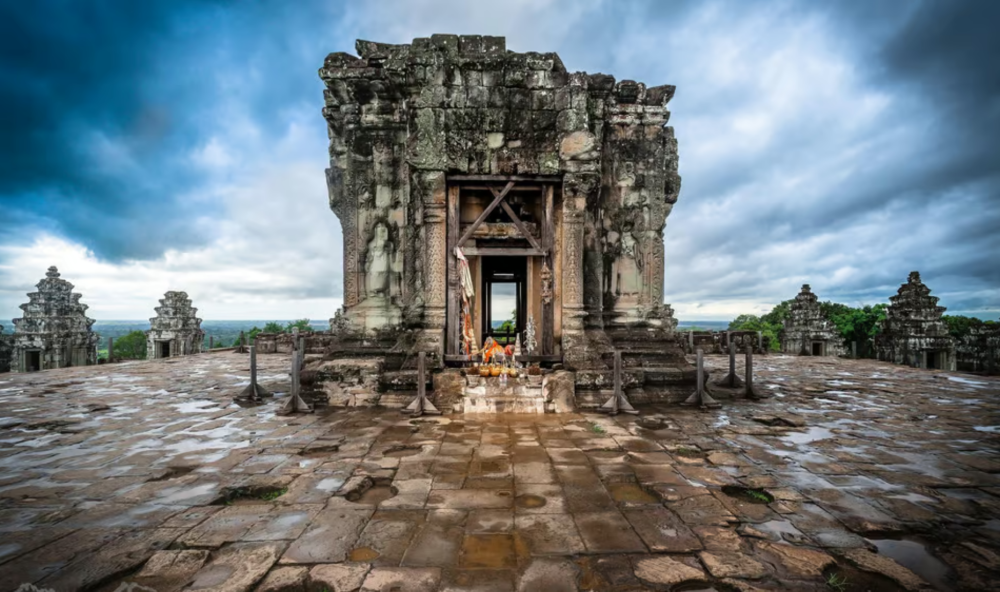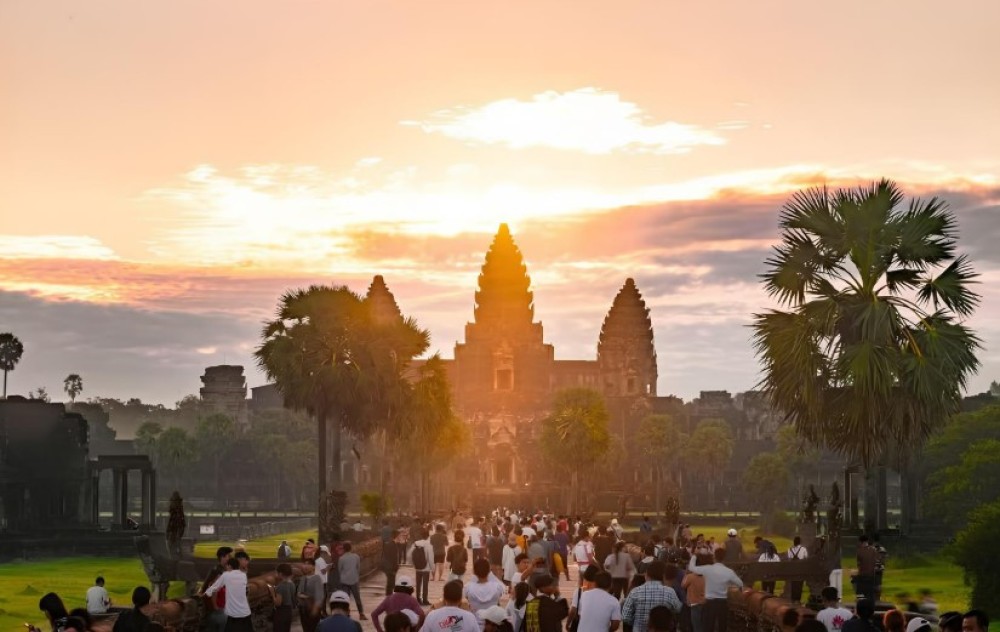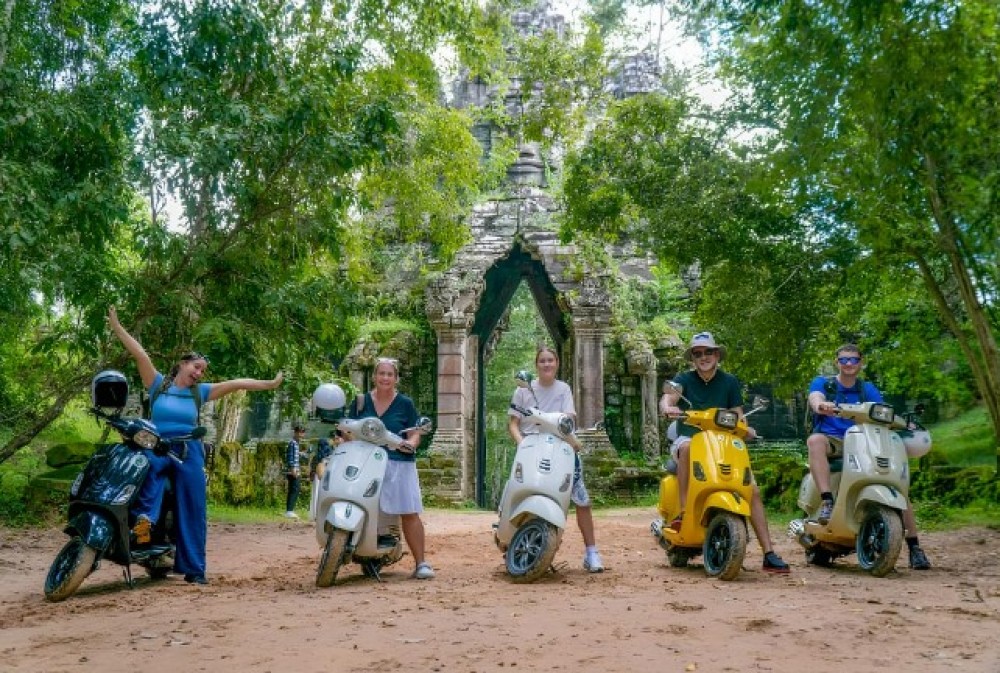- Cambodia
- Things to do in Siem Reap
- Bayon Temple
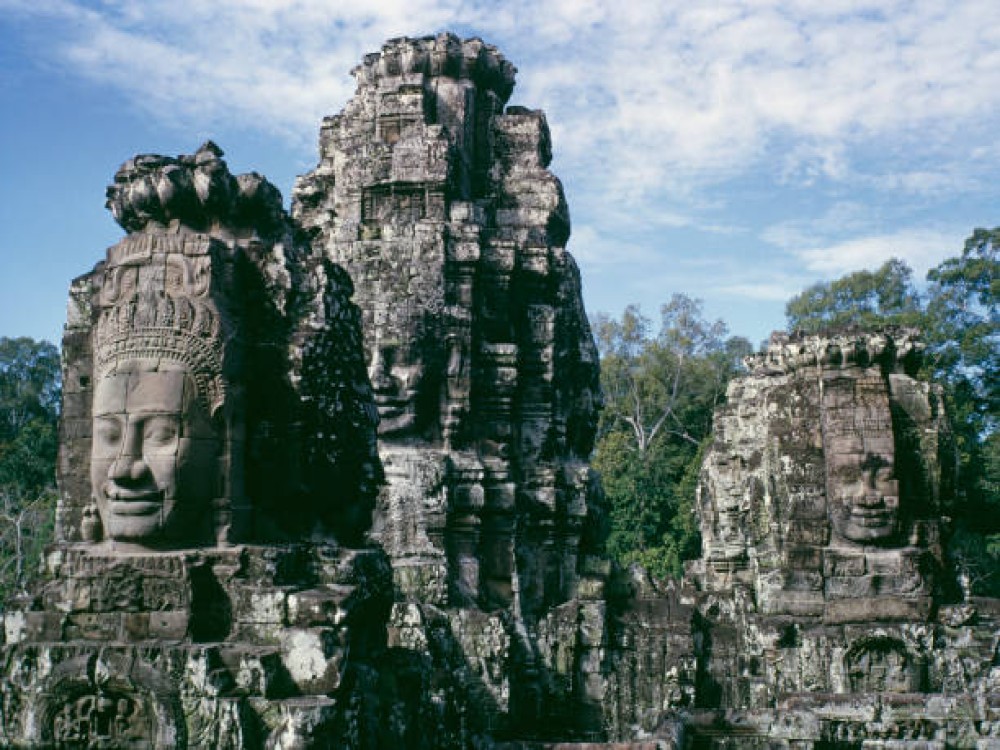
Bayon Temple
Bayon Temple is one of the most iconic and unique temples within the Angkor Archaeological Park. Built in the late 12th century by King Jayavarman VII, it is located at the center of Angkor Thom, the ancient city of the Khmer Empire. What makes Bayon Temple truly remarkable is its massive stone faces, over 200 of which are carved into the towers that rise above the temple. These enigmatic faces are believed to represent Avalokiteshvara, the bodhisattva of compassion, or possibly even King Jayavarman himself. The temple is a stunning fusion of Buddhist and Hindu influences, with intricate bas-reliefs depicting historical events, daily life, and myths. Bayon Temple's unique architectural design and its haunting faces make it one of the must-see wonders of Angkor.
Bayon Temple Tours & Tickets
Siem Reap: Angkor Wat: Small-Group Sunrise Tour
€15.00
per person
Angkor Wat: 2-Day Sunrise and Floating Village Tour
€47.00
per person
2-Day Angkor Small-Group Tour & Banteay Srei from Siem Reap
€57.00
per person
Siem Reap: Angkor Wat Sunrise E-bike Small Group Tour
€67.00
per person
Angkor Wat Private Sunrise Guided Tour And Banteay Srei
€77.00
per person
Explore Angkor Sunrise Small-Group Tour & Tonle Sap Sunset
€57.00
per person
Siem Reap: Angkor Wat Small-Group Sunrise Tour & Breakfast
€0.00
per person
Siem Reap: Angkor Wat Small-Group Day Tour and Sunset
€28.00
per person
From Siem Reap: Angkor Wat Sunrise and Temples E-Bike Tour
€77.00
per person
Siem Reap: E-Bike Guided Tour of Angkor Wat with Local Lunch
€127.00
per person
From Siem Reap: Angkor Wat And Floating Village 3-Day Trip
€173.00
per person
Siem Reap: Temple Tour with Angkor Wat Sunrise and Breakfast
€19.00
per person
3-Day Small-Group Tour with Kulen Mountain & Kampong Phluk
€100.00
per person
Siem Reap: Angkor Wat Sunrise Tour Via Tuk Tuk & Breakfast
€57.00
per person
Siem Reap: Angkor Wat Sunrise And Market Tour By Jeep
€104.00
per person
Angkor Wat Sunrise Small-Group Tour & Tonle Sap Boat Sunset
€65.00
per person
Siem Reap : Private Tuk-Tuk Tour of the Magnificent Temples
€12.50
per person
Siem Reap: Full Day Angkor Wat Temple Tour with Sunset
€18.00
per person
Angkor Wat: Guided Sunrise Bike Tour w/ Breakfast and Lunch
€52.00
per person
Siem Reap: Private Temple Tour Full Day By Car or Minivan
€9.38
per person
Cycle the Angkor Backroads inclusive Lunch at Local house
€52.00
per person
Cycle the Angkor Backroads inclusive Lunch at Local house
€52.00
per person
Siem Reap Unfoggetable Temple Tour 2-Day with Sunrise/Sunset
€57.00
per person
Angkor Wat: Guided Sunrise Bike Tour w/ Breakfast and Lunch
€52.00
per person
Private Angkor Wat Sunset Tour
€13.00
per person
Siem Reap: 4-Day Angkor Wat and Beng Mealea Tour
€0.04
per person
Angkor Region: 3-day Private Tour of Top Temples
€47.00
per person
Angkor Wat: 2-Day Sunrise and Floating Village Tour
€47.00
per person
Siem Reap: 2-Day Angkor Sunrise, Banteay Srey, & Beng Mealea
€191.00
per person
5-Day All The Sights Private Tour
€83.00
per person
Angkor Wat: Sunrise Jeep Tour with Breakfast and Lunch
€87.00
per person
Angkor Wat: Guided Jeep Tour Inclusive lunch at local house
€77.00
per person
Angkor Temple Full-Day Tour by Join-In luxury MiniBus
€20.00
per person
Sunrise Angkor Wat Temple Half Day Tour Join-In
€13.00
per person
Half-Day Angkor Sunrise & 3 Main Temples Tour Private Vehicles
€7.17
per person
2-Day Guided Trip to Angkor Wat & Kulen Mountain With Picnic
€77.00
per person
Angkor Zipline and Temple Tour with Sunset
€104.36
per person
Siem Reap: Angkor Wat: Small-Group Sunrise Tour
€14.77
per person
Private Angkor Wat Sunset Tour
€13.00
per person
Angkor Wat Guided Joint-in Tour
€19.00
per person
Angkor Wat: Guided Vespa Tour inclusive lunch at local house
€60.00
per person
The Basics
Bayon Temple stands in the heart of Angkor Thom and is renowned for its 54 towers, each adorned with multiple faces carved in sandstone. The temple was built as a state temple, and its central location within Angkor Thom reflects its importance during the reign of King Jayavarman VII. The temple’s design is labyrinthine, with narrow corridors, galleries, and terraces. The walls of Bayon are covered with extraordinary bas-reliefs that provide a glimpse into the history, religion, and everyday life of the Khmer Empire. Bayon Temple is a symbol of Khmer ingenuity and spirituality, and exploring it offers an immersive experience into the grandeur of Angkorian architecture.
Things to Know Before You Go
Before visiting Bayon Temple, it’s good to know that it’s one of the most visited temples in Angkor, so it can get crowded, especially during peak hours. The best times to visit are early in the morning or late afternoon to avoid the busiest crowds and to enjoy cooler temperatures. The temple is accessible by tuk-tuk, bike, or as part of a guided tour. Wear comfortable shoes as you will be walking over uneven surfaces. Bring water, sunscreen, and a hat, as there is little shade around the temple. Hiring a guide is highly recommended to fully appreciate the historical significance of the bas-reliefs and the meaning behind the stone faces.
How to Get There
Bayon Temple is located in the heart of Angkor Thom, about 10 kilometers north of Siem Reap, and is easily accessible by tuk-tuk, bike, or private vehicle. Most visitors combine their trip to Bayon with visits to other nearby temples in Angkor Thom, such as the Terrace of the Elephants or the Baphuon Temple. The temple is included in the Angkor Pass, which grants access to several temples in the Angkor Archaeological Park. If you prefer a more in-depth experience, consider hiring a guide who can provide valuable insights about the history and the symbolism of the temple’s features.
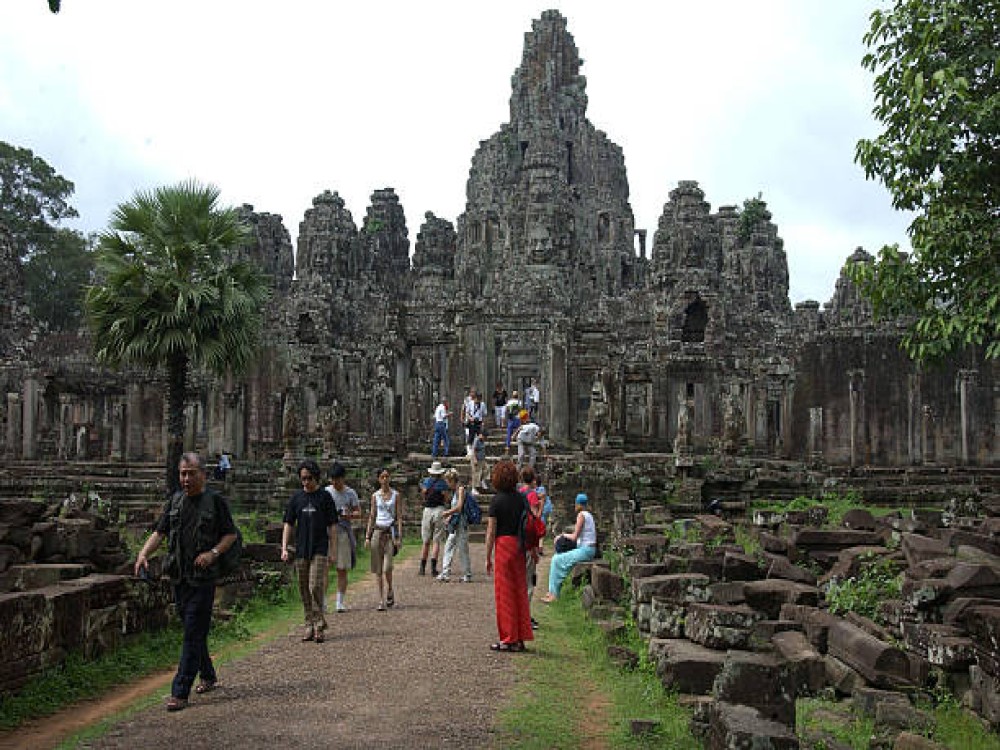
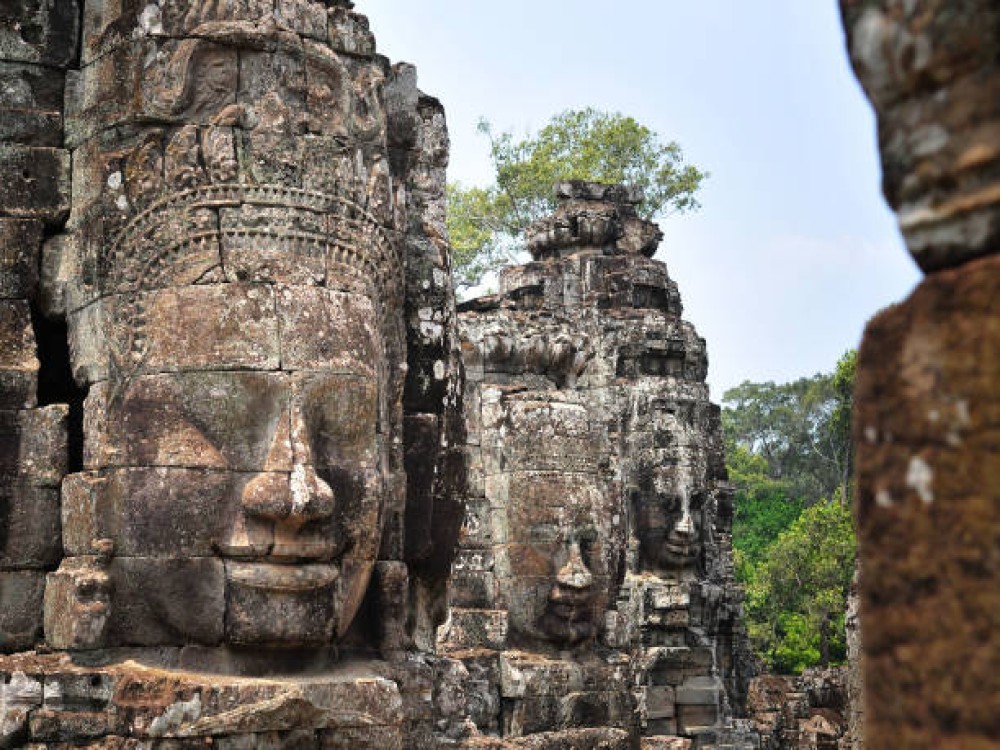
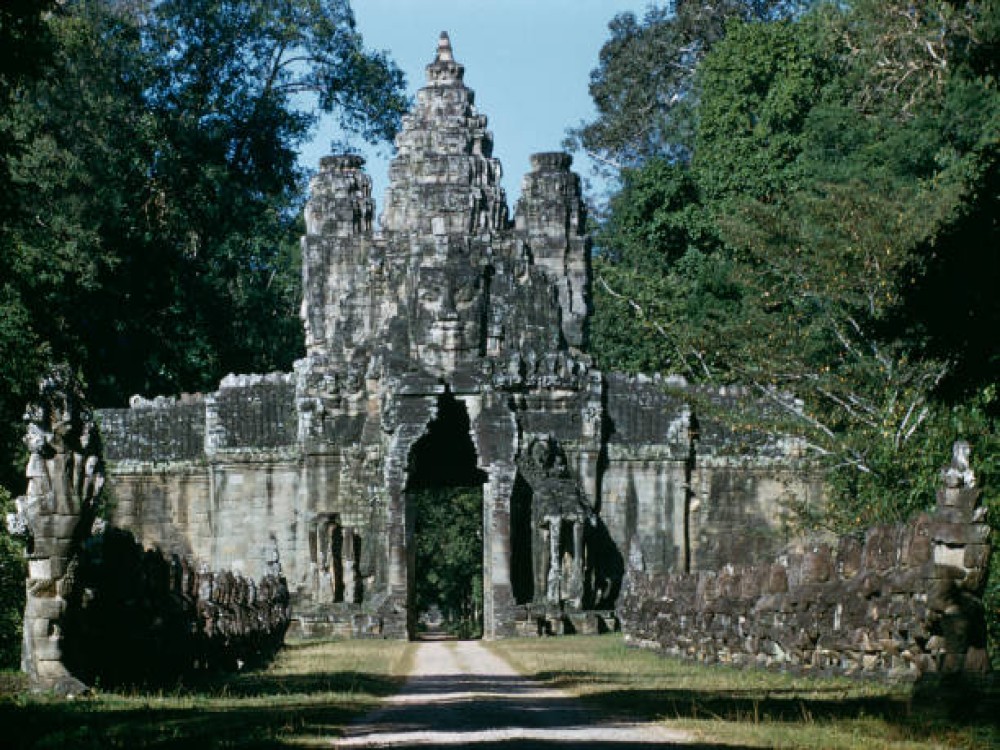
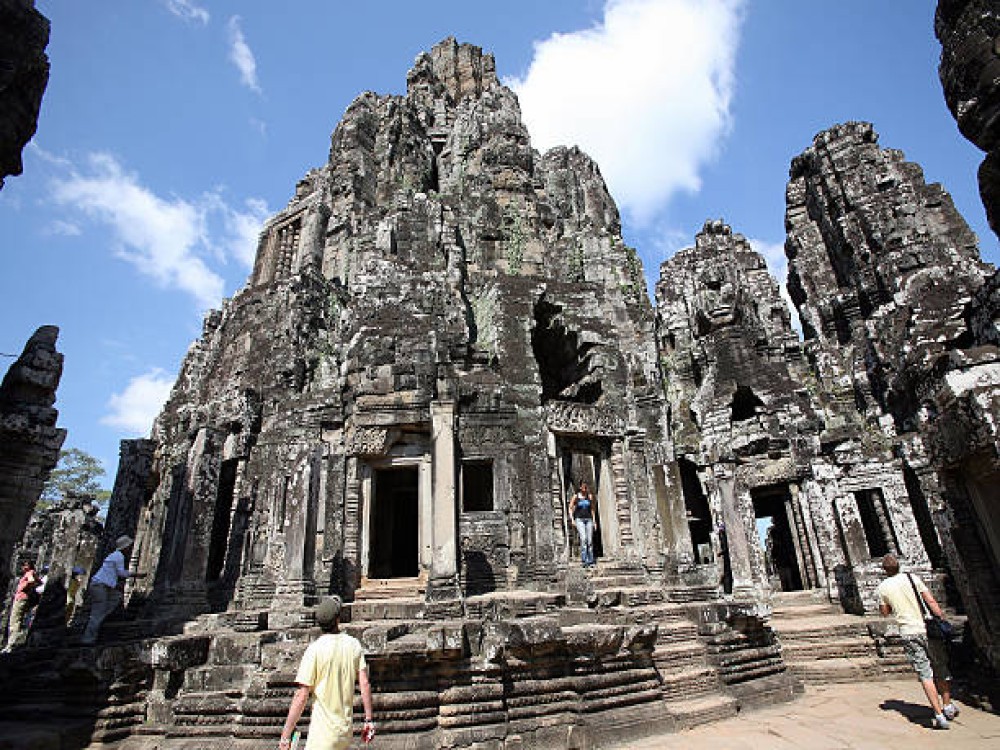
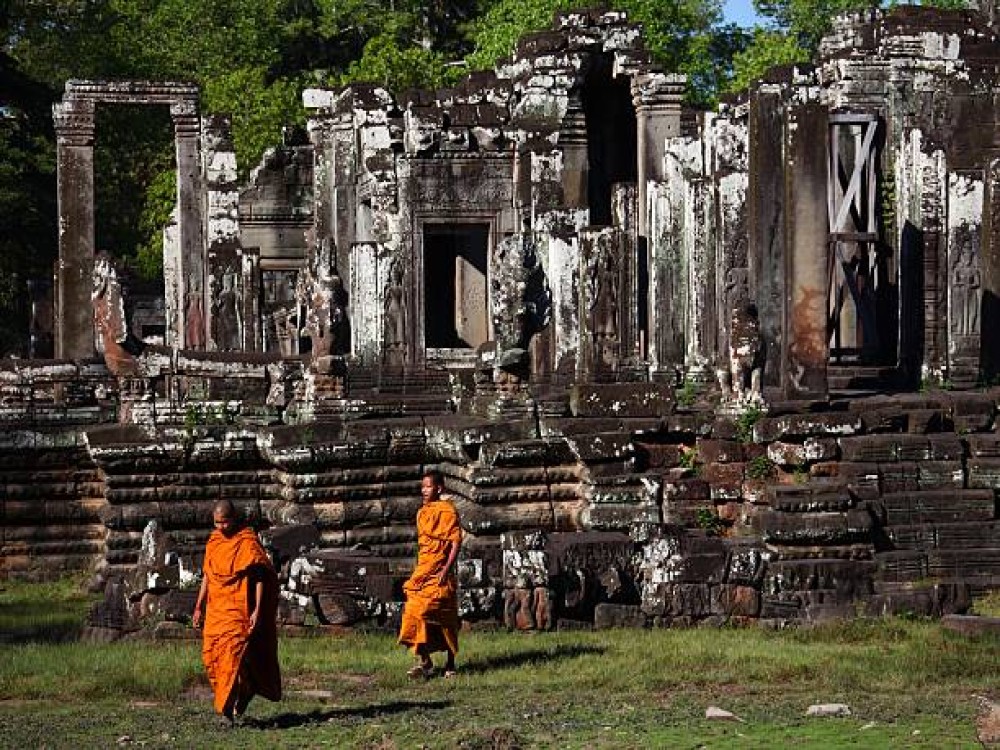
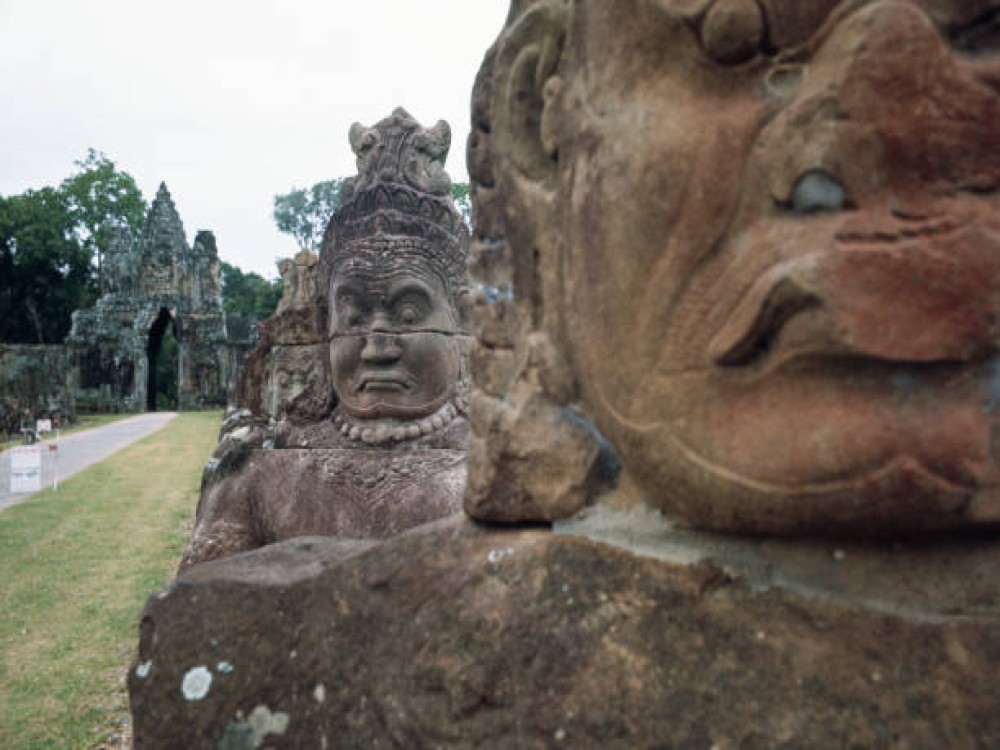
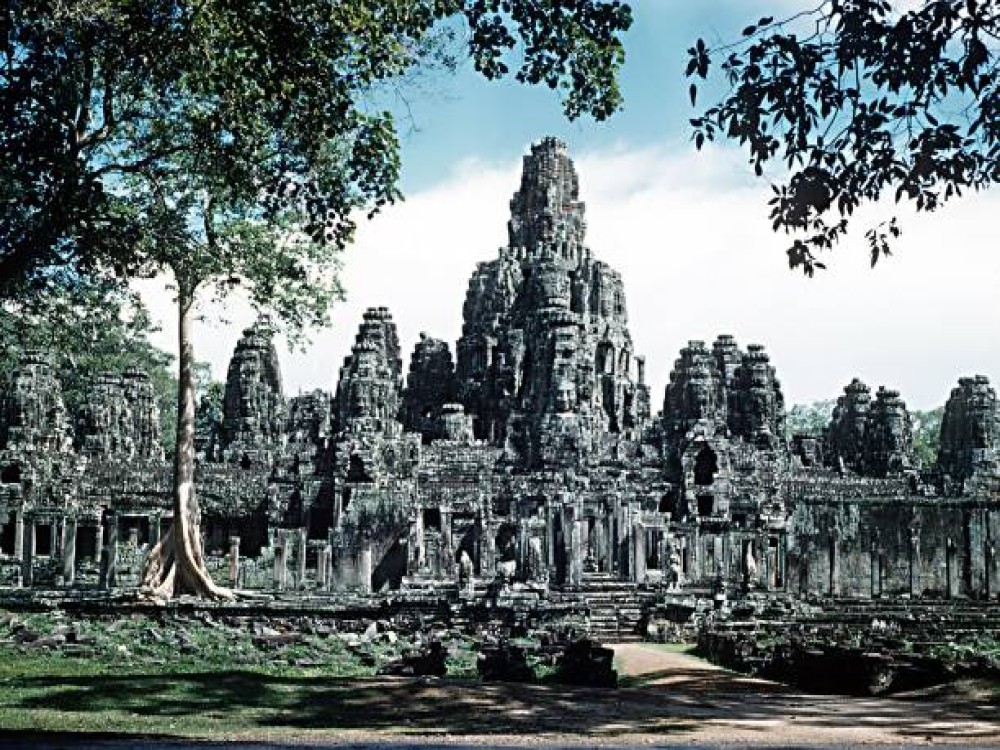

When to Get There
The best time to visit Bayon Temple is early in the morning, right when it opens, or late in the afternoon. These times offer cooler temperatures and fewer crowds, allowing you to explore the temple in peace and take in the details of the sculptures and architecture. Visiting early also provides the opportunity to capture the temple in the soft morning light, which is ideal for photography. The peak tourist season runs from November to February, so if you’re looking to avoid large crowds, plan your visit for the shoulder seasons (March-April or September-October) when the weather is still pleasant, but fewer tourists are around.
Day Trips from Siem Reap
Bayon Temple is ideally located for a full day of exploration in the Angkor complex. After visiting Bayon, head to the nearby Terrace of the Elephants, where you can see beautiful carvings of elephants and other animals. Continue your journey to Angkor Wat, the world’s largest religious monument, which is just a short drive away, or explore the quieter Ta Prohm temple, where tree roots intertwine with the stone ruins. You can also visit Banteay Kdei, a peaceful, less-visited temple surrounded by lush greenery. Combining Bayon with these other iconic temples makes for an unforgettable day trip, offering a perfect mix of ancient history, stunning architecture, and cultural insight.
Copyright © 2025 All Rights Reserved




